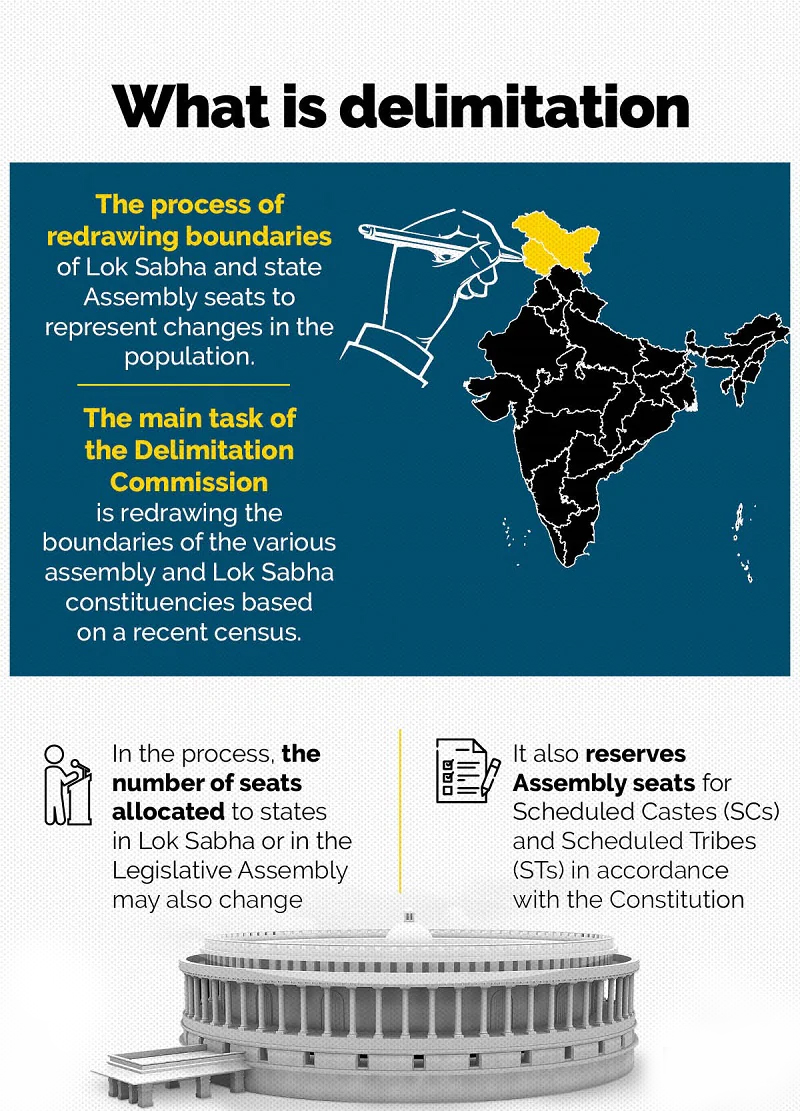Context:
The issue of delimitation has recently sparked significant discussion in India, particularly after Tamil Nadu’s Chief Minister expressed concerns about the process.
Issues around Delimitation:
The last delimitation exercise was conducted based on the 1971 Census, after which the number of Lok Sabha seats was frozen to encourage population control. However, India's population growth has been uneven, with states like Uttar Pradesh, Bihar, Madhya Pradesh, and Rajasthan witnessing rapid increases compared to states like Kerala, Tamil Nadu, Karnataka, and Andhra Pradesh. This population disparity has raised concerns over the fairness of representation in the Lok Sabha.
What is Delimitation?
- Delimitation is the process of redrawing the boundaries of electoral constituencies in India, undertaken after each Census to adjust the number of seats in Parliament and state Assemblies based on population changes.
- The objective is to ensure equal representation, so that constituencies across the country have roughly the same population size, making the electoral system more balanced and fair.

Constitutional Provisions:
Delimitation is mandated by the Constitution under Article 82 and Article 81:
- Article 82 requires the allocation of Lok Sabha seats to be readjusted after each Census based on population changes.
- Article 81 sets a cap of 550 members in the Lok Sabha, with 530 members representing states and 20 representing Union Territories. It also aims to maintain uniformity in the ratio of seats to population across states.
The goal of delimitation is to ensure that representation in Parliament and state Assemblies is equitable, so that each voter’s vote carries equal weight.
History of Delimitation in India:
1. Pre-1976: Before the 42nd Amendment, delimitation exercises took place after the 1951, 1961, and 1971 Censuses. During this period, the redistribution of seats in the Lok Sabha, Rajya Sabha, and state Assemblies was carried out based on population growth, leading to changes in constituency boundaries.
2. 42nd Amendment (1976): During the Emergency (1975-77), the 42nd Amendment froze the total number of seats in the Lok Sabha and state Assemblies until after the 2001 Census. This was done to prevent states with higher population growth—mostly in northern India—from gaining disproportionate representation while encouraging family planning measures.
3. 2001 Delimitation: In 2001, a Delimitation Commission was set up to redraw constituency boundaries based on the 2001 Census. However, the total number of seats remained unchanged due to opposition from southern states, which feared a loss of representation due to their lower population growth.
Way Forward:
One potential solution to the delimitation debate is to cap the number of Lok Sabha seats at 543. This would preserve the current balance of representation across states, ensuring that those that have successfully controlled their population growth do not lose political influence. Another approach could be to increase the number of MLAs in each state in proportion to their projected population growth. This could enhance democratic representation while maintaining the federal structure of the country.







